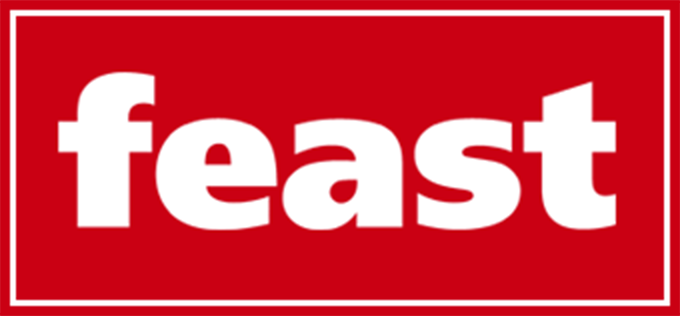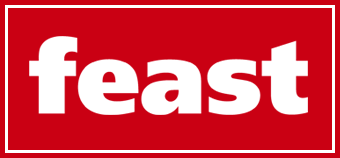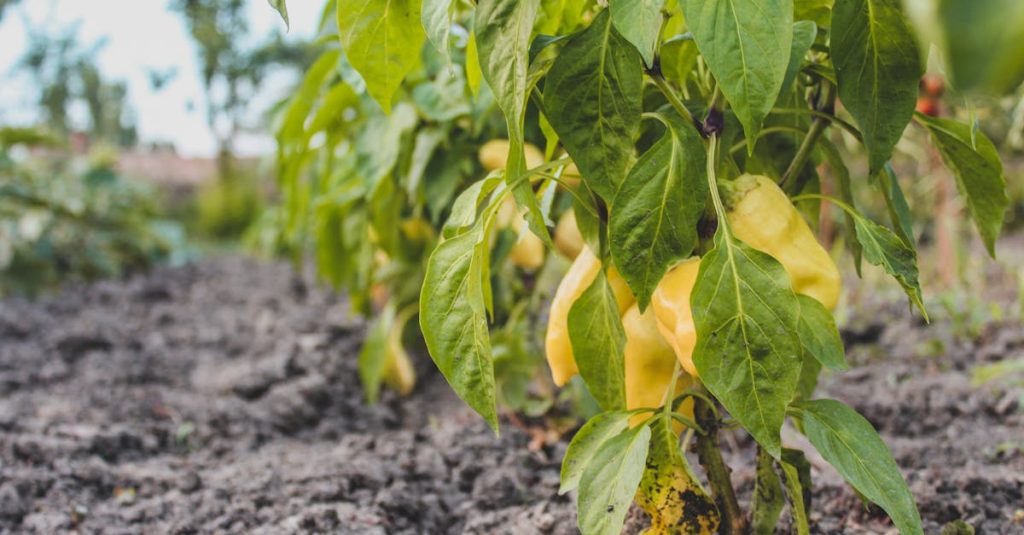Health and wellness have taken center stage in how we eat, and technology is transforming the food industry to meet these evolving demands. As consumers grow more conscious about nutrition and sustainability, health-tech innovations are reshaping everything from personalized meal plans to food safety solutions. It’s clear that the intersection of tech and food is no longer a niche—it’s a necessity.
We’re seeing breakthroughs like AI-driven dietary recommendations and blockchain for transparent sourcing, paving the way for smarter, healthier choices. This surge in demand highlights the need for solutions that not only enhance consumer health but also address global challenges like food security and waste.
Understanding Health-Tech Innovations in the Food Industry
Health-tech innovations are revolutionizing the food industry by integrating cutting-edge technologies to address health and nutrition needs. These innovations include tools like AI-based recommendations and IoT-enabled tracking systems, which enhance consumer engagement and improve food transparency.
Personalized Nutrition
Personalized nutrition leverages technologies like AI to create individual dietary recommendations. By analyzing data such as genetic profiles and lifestyle habits, companies can tailor meal plans to meet specific health goals. For instance, platforms using AI generate bespoke diets that help manage conditions like diabetes or obesity.
Food Safety Enhancements
Health-tech solutions play a vital role in advancing food safety. Blockchain technology ensures supply chain traceability, helping prevent contamination and ensuring ingredient integrity. IoT devices monitor factors like temperature and humidity during transportation, maintaining food quality and compliance standards.
Sustainable Food Production
Advanced technologies focus on sustainable practices by minimizing waste and optimizing resources. Data-driven systems improve crop yields and reduce environmental impacts, while innovations like smart packaging extend shelf life and support waste reduction.
Consumer Health Monitoring
Wearable health-tech gadgets track nutritional intake and tie into broader wellness ecosystems. Solutions align dietary habits with respiratory or physical health needs, similar to how devices like oxlife independence o2 concepts support individuals requiring advanced health monitoring.
The integration of health-tech fosters healthier choices, boosts transparency, and supports sustainability efforts across the food industry.
Factors Driving the Growing Demand
The demand for health-tech innovations in the food industry is fueled by several key factors. These drivers reflect shifts in consumer priorities and advancements in technology that continue to shape the sector.
Increasing Awareness of Health and Wellness
Consumers are prioritizing health and wellness like never before. Rising cases of chronic conditions, including diabetes and obesity, have led to a focus on preventive care through better diet choices. Organizations like the CDC report a growing public understanding of nutrition’s role in managing long-term health. This heightened awareness is pushing food companies to innovate with health-focused offerings, such as tech-enabled personalized meal plans and fortified foods that support immune health. Leveraging health-tech solutions, businesses are meeting the rising need for accessible, tailored nutritional guidance.
Advances in Technology and Digital Tools
Recent technical leaps are enabling transformative solutions in the food industry. AI-powered applications, blockchain systems, and IoT-enabled devices are driving efficiency and safety throughout supply chains. For instance, AI tools analyze consumer health data to provide personalized nutrition guidance, while blockchain improves transparency in sourcing by ensuring traceability. IoT sensors monitor and maintain food quality during distribution, reducing waste and enhancing safety. These advancements are reshaping how we view food production and consumption, creating opportunities for innovation that meets modern health demands.
Rising Consumer Expectations for Transparency
Consumers increasingly demand clear information about the origins and nutritional value of their food. Blockchain platforms enable secure tracking of ingredients from farm to table, addressing concerns over authenticity and sustainability. Health-conscious individuals favor brands with transparent labeling and detailed sourcing practices, which also align with sustainable values. Digital tools and data-driven systems help provide the transparency consumers expect, fostering trust and loyalty. This trend, combined with health-focused innovations, reinforces the industry’s commitment to meeting evolving consumer needs.
Key Health-Tech Trends Shaping the Food Industry

Photo by Anees Ur Rehman on Unsplash
Technological advancements are reshaping how the food industry meets health and safety standards. These developments are addressing personalized nutrition, food packaging, and production efficiency through innovative tools and data-driven solutions.
Personalized Nutrition Solutions
Consumers are turning to personalized nutrition to address unique dietary needs. By leveraging AI-powered tools, the food industry now designs meal plans tailored to individual preferences, genetic makeup, and health objectives. For example, platforms analyze biomarkers and lifestyle data to craft specific dietary recommendations that manage chronic conditions like diabetes. Personalized supplementation is also gaining traction, offering targeted solutions to address nutrient deficiencies effectively. Combining health data from wearable devices with meal planning applications reflects how personalization fosters better health outcomes.
Smart Packaging and Food Safety Technologies
Smart packaging innovations are transforming how food safety is managed. IoT-enabled packaging monitors freshness and detects contamination, ensuring higher product quality for consumers. Tools like time-temperature indicators provide real-time feedback on storage conditions, crucial during transit. Smart labels incorporating QR codes empower consumers to access product provenance and nutritional information instantly. Blockchain integration enhances supply chain traceability, reducing risks of tampering or fraud. Together, these advancements promote food safety and transparency in an increasingly health-focused market.
AI and Data Analytics in Food Production
AI and data analytics are streamlining food production processes for sustainability and efficiency. Predictive models powered by AI optimize resource allocation, cut waste, and forecast demand accurately. Machine learning systems analyze market trends to develop healthier food products efficiently. Data tools ensure precise monitoring of soil conditions, enabling smarter agriculture practices that boost crop yields sustainably. In production lines, IoT sensors capture real-time data to maintain consistency and quality control. These innovations demonstrate how targeted data integration reshapes food systems to align with health and environmental goals.
Benefits of Health-Tech Innovations for Businesses and Consumers
Health-tech innovations are reshaping the food industry, bringing measurable benefits to both businesses and consumers. From deeper consumer engagement to operational efficiencies and improved health outcomes, these advancements are addressing critical needs in the market.
Enhanced Consumer Engagement
Health-tech solutions are fostering stronger connections between consumers and brands. Personalized nutrition tools, such as AI-driven platforms, analyze customer data to deliver tailored recommendations that cater to unique dietary preferences. For instance, apps integrating these technologies provide meal suggestions based on allergens or health goals, creating value for consumers seeking customized solutions.
Smart packaging innovations equip consumers with real-time data on food freshness and nutritional content. IoT-enabled labels allow individuals to scan packaging for detailed product insights, improving purchase decisions. This level of interaction builds trust and loyalty, enhancing consumer satisfaction and brand recognition.
Improved Supply Chain Efficiency
Health-tech advancements are bringing transformative changes to food supply chains. Blockchain technology simplifies traceability, allowing businesses to track ingredients from farm to table. This transparency not only ensures food safety but also strengthens accountability, reducing risks related to contamination or fraud.
AI-powered solutions are optimizing resource allocation within production and distribution systems. For example, predictive tools enhance logistics by minimizing transportation delays and improving inventory management. By integrating these technologies, businesses achieve faster deliveries, lower costs, and enhanced sustainability in supply chain operations.
Better Health Outcomes
By integrating health-tech innovations, we can address significant health challenges in nutrition. Personalized nutrition platforms assist individuals in managing chronic conditions like diabetes or cardiovascular diseases by delivering data-based dietary guidance. Tailored meal plans support overall wellness, aligning with preventive health strategies.
Wearable devices, including smartwatches, enable consumers to monitor calorie intake and track hydration levels in real time. These insights empower individuals to adopt healthier eating patterns. Combined with industry efforts to offer nutrient-dense food products, health-tech enhances public health outcomes while reinforcing the link between technology and wellness.
Challenges in Implementing Health-Tech in the Food Sector
Implementing health-tech in the food sector presents several challenges that slow adoption. These obstacles include costs, regulatory hurdles, and data security risks, all requiring strategic solutions to mitigate.
High Initial Investment Costs
Developing and integrating health-tech innovations demand substantial financial resources. Costs include designing AI-driven tools for personalized nutrition, implementing blockchain for supply chain transparency, and deploying IoT devices for real-time monitoring. For small and mid-sized companies, these expenses often exceed available budgets, limiting their ability to compete with larger firms. Additionally, investments in training employees to adapt to new technologies increase the financial strain, further delaying widespread adoption. Access to funding or partnerships can alleviate this issue for businesses facing economic constraints.
Regulatory and Compliance Issues
The health-tech industry operates under strict regulatory frameworks to ensure food safety and consumer welfare. Compliance with region-specific regulations for AI applications, IoT devices, and blockchain adds complexity for global operators. The FDA and similar agencies enforce standards for labeling, safety protocols, and data transparency that demand additional operational planning. Non-compliance risks financial penalties and reputational damage, making regulatory alignment essential. Streamlining multi-regional compliance processes is critical for scaling health-tech solutions.
Consumer Privacy and Data Security Concerns
Health-tech tools gather vast amounts of consumer data, raising concerns about privacy and security. Personalized nutrition platforms, wearable devices, and blockchain systems store sensitive details, including health metrics and dietary habits. Without robust security measures like encrypted databases and user anonymization, the risk of data breaches increases. These vulnerabilities erode consumer trust and deter adoption. Transparent data policies and advanced security infrastructure ensure protection, fostering confidence among users.
Future Prospects for Health-Tech in the Food Industry
According to the World Health Organization, the global focus on health and nutrition is driving industries to innovate faster than ever. Advancements in health-tech are set to revolutionize the food industry further by introducing innovative solutions that address emerging consumer demands and industry challenges. Integration of AI, blockchain, and IoT will likely enhance personalization, food safety, and supply chain transparency. For example, AI algorithms might refine meal personalization by incorporating real-time health data from wearable devices, while blockchain could ensure end-to-end traceability in more complex food supply chains.
Growing interest in sustainability aligns with health-tech-driven solutions like resource optimization technologies. Precision agriculture, powered by AI and IoT, is expected to scale sustainable food production. These systems monitor soil conditions, reduce resource waste, and improve crop yield while delivering nutritional value. Enhanced data insights could also drive responsible sourcing initiatives, prioritizing ethically produced and environmentally friendly ingredients.
Health monitoring devices may integrate more seamlessly with food technologies, especially as tools like Oxlife Independence by O2 Concepts show how portability and usability in health-tech are becoming essential for lifestyle improvements. By linking consumer health data with smart dietary platforms, we can expect better alignment between wellness goals and daily food choices.
Collaborative efforts between tech companies, health organizations, and food producers are anticipated to accelerate innovation. Partnerships could lead to developing AI tools for predicting food trends, enabling manufacturers to align products with shifting consumer preferences. Additionally, government and industry standards will likely continue evolving to facilitate the adoption of safe and effective health-tech solutions in global markets.
As consumers continue to seek transparency, sustainability, and personalized health solutions, the food industry will rely on health-tech innovations to meet these expectations, ultimately fostering a healthier and more sustainable future.



